What To Do About
Spotify
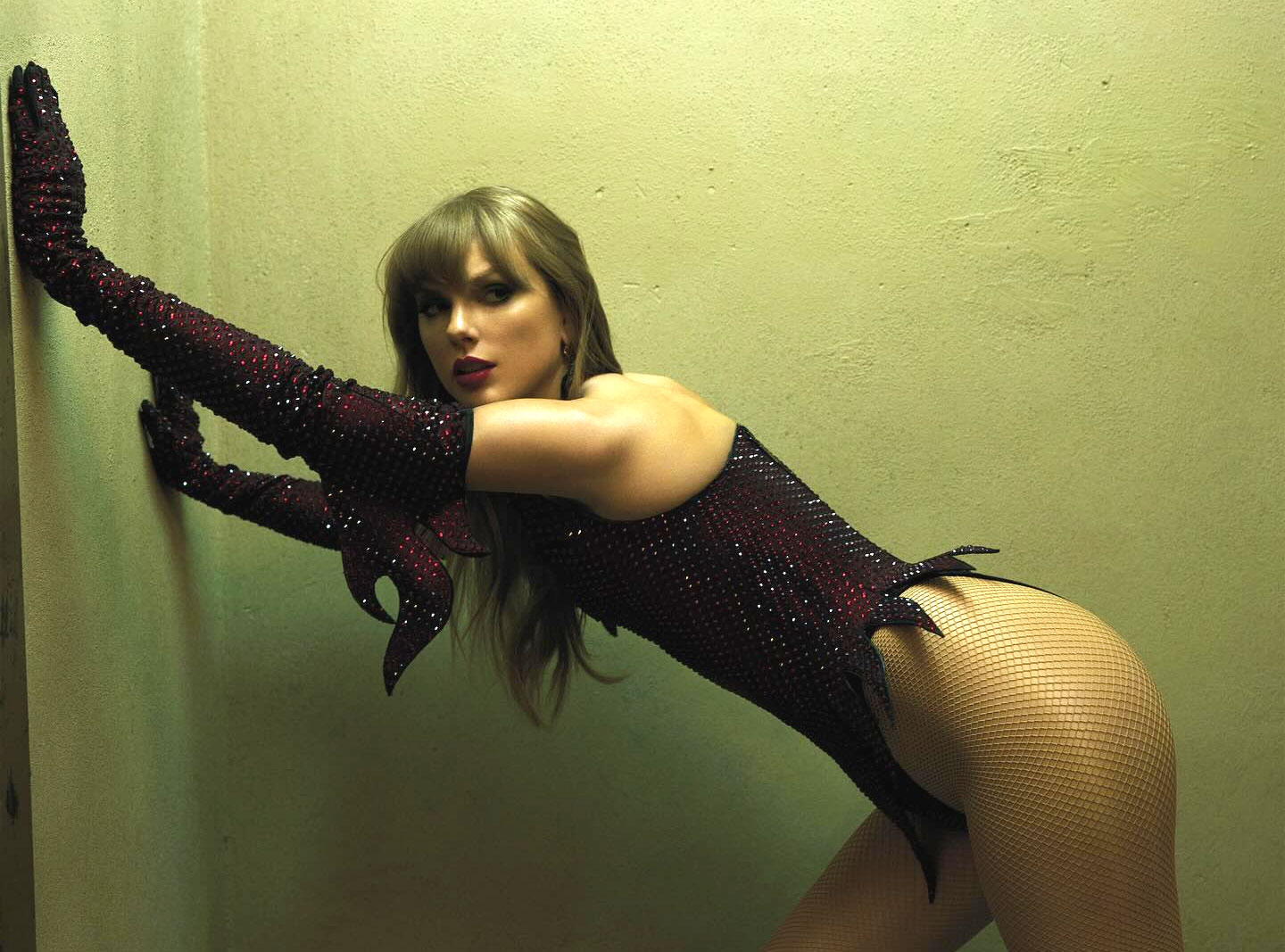
The "Per-Play Payout" Myth
We've all heard the claim. "Spotify pays $0.003-$0.005 per play. Tidal & Apple, on the other hand, pay about $0.01 per play. Therefore, Tidal & Apple pay artists more." This is, in fact, the main argument behind the rash of social media users pronouncing that they're cancelling their Spotify subscription. This is repeated ad nauseum on social media & by mainstream journalists, including influential internet pundits like Anthony Fantano. But... is it true?
No, it is not. Despite the apparent consensus, it is not true.
Here's the simplest way I can explain it: Suppose Spotify had only 1 streamer, paying $10/mo, & one artist on the platform. Now suppose Apple Music had only 1 streamer, paying $10/mo, & one artist on the platform. Both Spotify & Apple are paying 70% of revenue ($7) to the artist & keeping the other $3 to cover the cost of providing the service (and profits if there's anything left over). So at the end of the month, the Spotify artist & Apple Music artist both are going to receive a $7 check. And yet, if the Spotify subscriber streams 2,000 songs, the "per stream payout" is going to be $0.0035. And if the Apple user streams 700 songs, the "per stream payout" is going to be $0.01 per stream.
If the Spotify user says, "Oh no! Spotify seems to be paying the artists less!," and cancels their subscription & moves to Apple Music, their 2,000 streams will not then payout at $0.01 per stream. That would be a $20. Where would it come from? That's almost triple the user's contribution to the revenue pool. Instead, the "per stream payout" calculation will drop to $0.005 per play. This new, lower calculation does not mean that Apple Music all of the sudden began paying artists less. It simply means that user behavior changed while the monthly subscription price remained fixed.
A streaming service would only pay artist less if they reduced the percentage of revenue that they set aside for royalty payments or if they reduced the subscription price.
Think of it like a pizza. If you & I are splitting a pizza, it doesn't matter if it's cut into 8 slices or 40 slices. 20/40 = 4/8 = 1/2. This is how fractions work. But if I'm exchanging half of my 40 slice Pepperoni for half of your 8 slice cheese pizza, you're not going to get 20 slices that are the size of your slices. That would be 2.5 whole pepperoni pizzas. The expectations have to change. You're going to get smaller slices, but you're going to get the percentage of pizza you're entitled to.
This is how payouts work... if a major artist like Sabrina Carpenter hypothetically receives 5% of all total streams on a service for a given pay period, she's paid 5% of the revenue pool, regardless of how many total streams occurred.
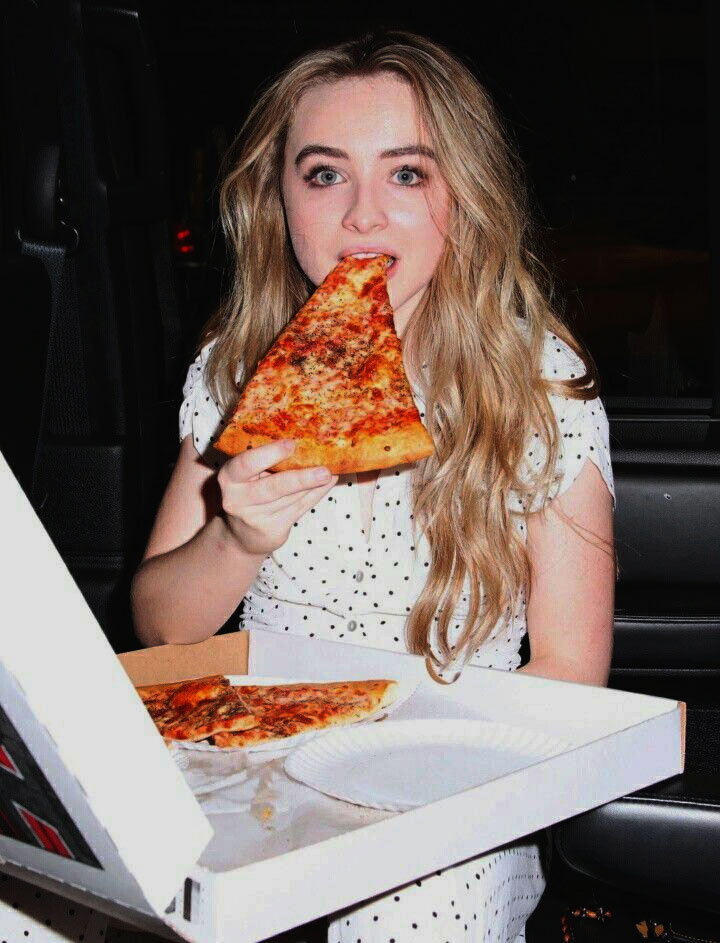
These tier lists, then, that you commonly see, aren't what they present themselves to be. They're not how generous these services are to artists. They simply describe which services' users stream at a have high volume & which stream at a low volume.
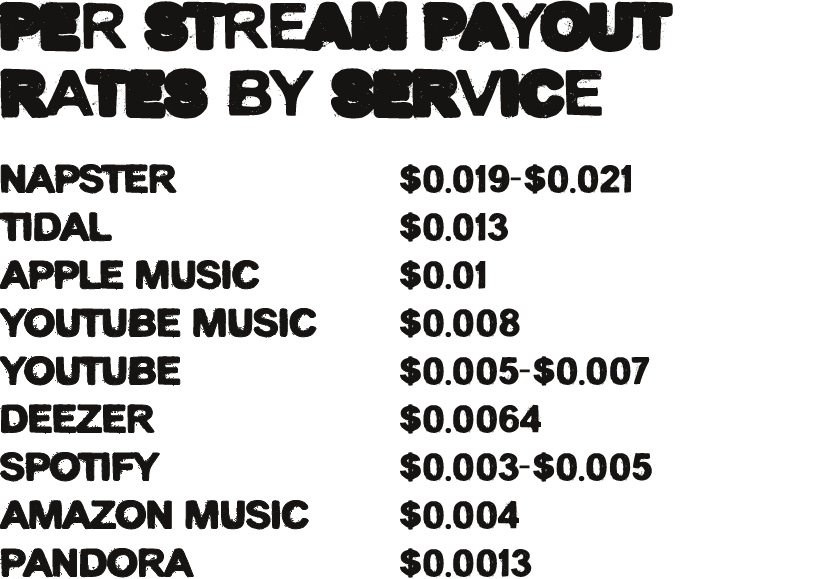
And this makes sense, right? Some Apple users just get Apple Music bundled with their Apple One subscription. They might not use it at all. Amazon users get Amazon Music bundled with their Prime membership. They may not even know they have it. So the average amount of music listened to per month per user on these services is going to be lower.
Tidal users tend to be more self-directed, choosing the music they want to listen to. Whereas Spotify users are more passive, oftentimes allowing Spotify to choose the music for them for hours at a time, as if they're listening to the radio. So of course Tidal users are then going to stream at a lower volume, & Spotify users are going to stream at a higher volume.
So it stands to reason that Spotify's per stream payout calculation will be lower, & the calculation for services like Apple Music, Amazon Music, & Tidal will be higher. This calculation, then, does not mean that some streamers pay "more" than others.
If you don't believe me, here's industry writer Bob Lefsetz explaining the same thing. "1. There is no per stream rate. Period. On any of these streaming services. There’s a pool of money which is divided amongst the tracks based on how many times they were played. 2. Tracks are streamed less on Apple and Amazon. And therefore each stream is worth more."
The responses were also illuminating, like this one from former Director of Copyright and Music Usage at ASCAP, Michael Battiston: "I can’t tell you how often I’ve explained the 'no-such-thing-as-a-streaming-rate' thing to songwriters and, as simple as the concept is, they can’t/won’t accept it. In their minds they are being cheated. And don’t get me started on what they think about Spotify taking a cut for operating costs."
So then who pays the most?
In a general sense, the way that streaming works with all monthly subscription fees being roughly equal & the percentage of revenue set aside being roughly equal, if you added up all of the revenue & all of the plays across all streaming services, it would amount to roughly the same per play payout calculation as if all streaming users were subscribed to the same service, be it Spotify or Apple or Tidal or any other service.
But it's worth mentioning that Spotify has by far the largest share of subscribers & therefore delivers the most revenue to artists.
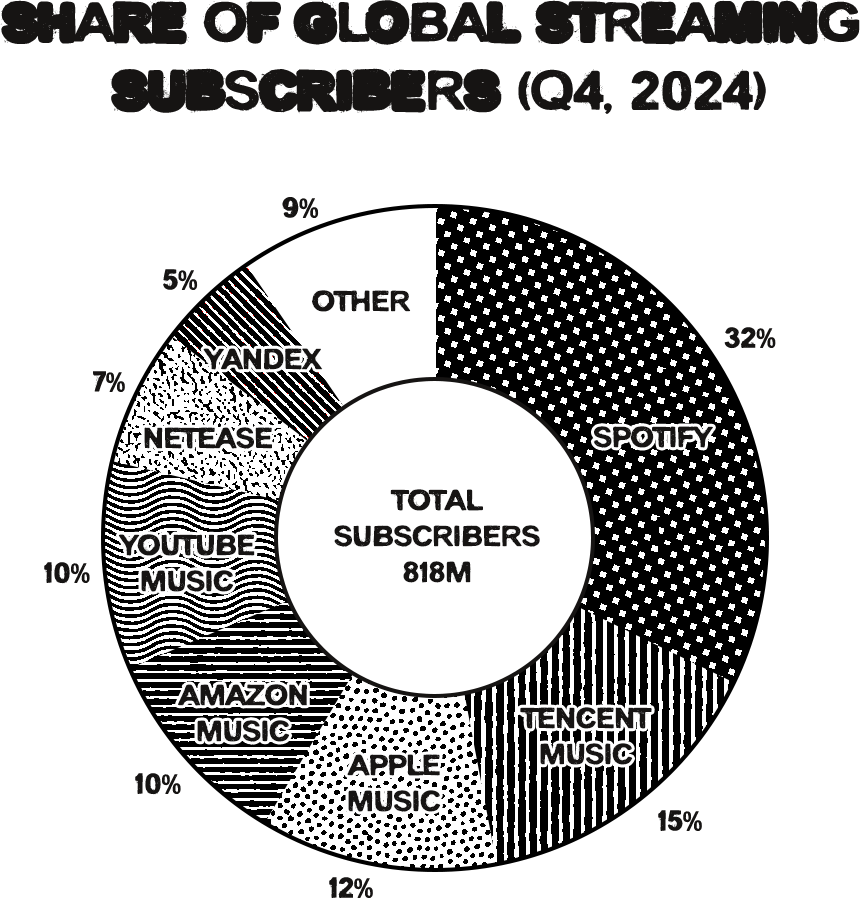
Spotify's Loud & Clear report tracks the growing number of artists generating more royalties as premium streaming adoption increases over time. And the standout stat to me is that the number of artists generating $500,000 or more has tripled since 2017 to 2,940 artists.
Despite how the per-stream "rankings" make things appear, far few artists are earning a living wage (the thing that disgruntled artists most often ask for) on Apple Music or Tidal.
What about Spotify's free tier?
It's true that the ad-supported plays contribute less to the revenue pool than subscriptions. And this has led to pushback that music being free to the user somehow devalues it. Taylor Swift, herself, cited this reason for removing her music from Spotify before releasing 1989. (She would return her music to Spotify 3 years later.) And, to be fair, the "grand experiment," as she called Spotify in 2014, might've looked to be a giveaway back then. But Spotify's premium subscribers have since grown from 18m to 268m. Conversion is proving to be not just successful & profitable, but essential to growing the overall streaming economy & revitalizing the recorded music industry. Swift is certainly one of the 70 artists who generated $10m+ in Spotify streams in 2024. Now that she owns the masters for her back catalog, she will take home the lion's share of that revenue.
Indeed, niche upmarket streaming services like Tidal have made their mark by dubiously positioning themselves as an artist friendly alternative to Spotify. Their success comes from eating into Spotify's market share, not by growing the market. Their users have pivoted to Tidal from other services, & there are tools made specifically for this purpose, importing Spotify playlists to Tidal. And yet... if not for Spotify's free tier, many of these users would not have been onboarded to the streaming economy in the first place. In this way, Spotify's free tier subsidizes onboarding for the broader industry, making it most responsible for the industry's rapid growth.
Spotify is also expanding the industry internationally. It operates in economically underdeveloped nations (compared to the U.S.) where monthly subscription fees are as low as a dollar. These subscriptions obviously contribute less to the revenue pool right now, but will grow over time & are key to seeding the industry of 10 or 20 years from now. Based on the per-stream payout calculation, Taylor Swift & others would hold these expansion projects against Spotify. But that's not seeing the entire picture.
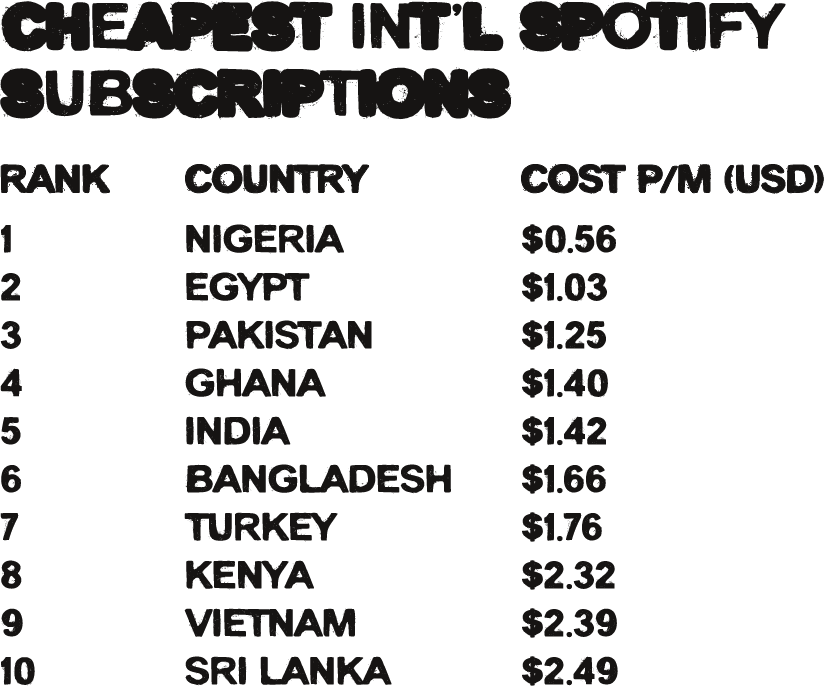
Is this essay some kind of Spotify advertisement or something?
I do credit Spotify with saving the music industry from total economic collapse. Digital downloads were cannibalizing physical CD sales, & Spotify gave the consumer a reason to return to spending $10/mo on music, rather than $0.99 or $1.29 every now & then to update their iPod. But, at the same time, it's a corporation. And so I have no loyalty to any corporation. If a product were meaningfully better, I would switch to it. And I support anyone using any premium streaming service. I'm just trying to clarify that there aren't better or worse services when it comes to payouts.
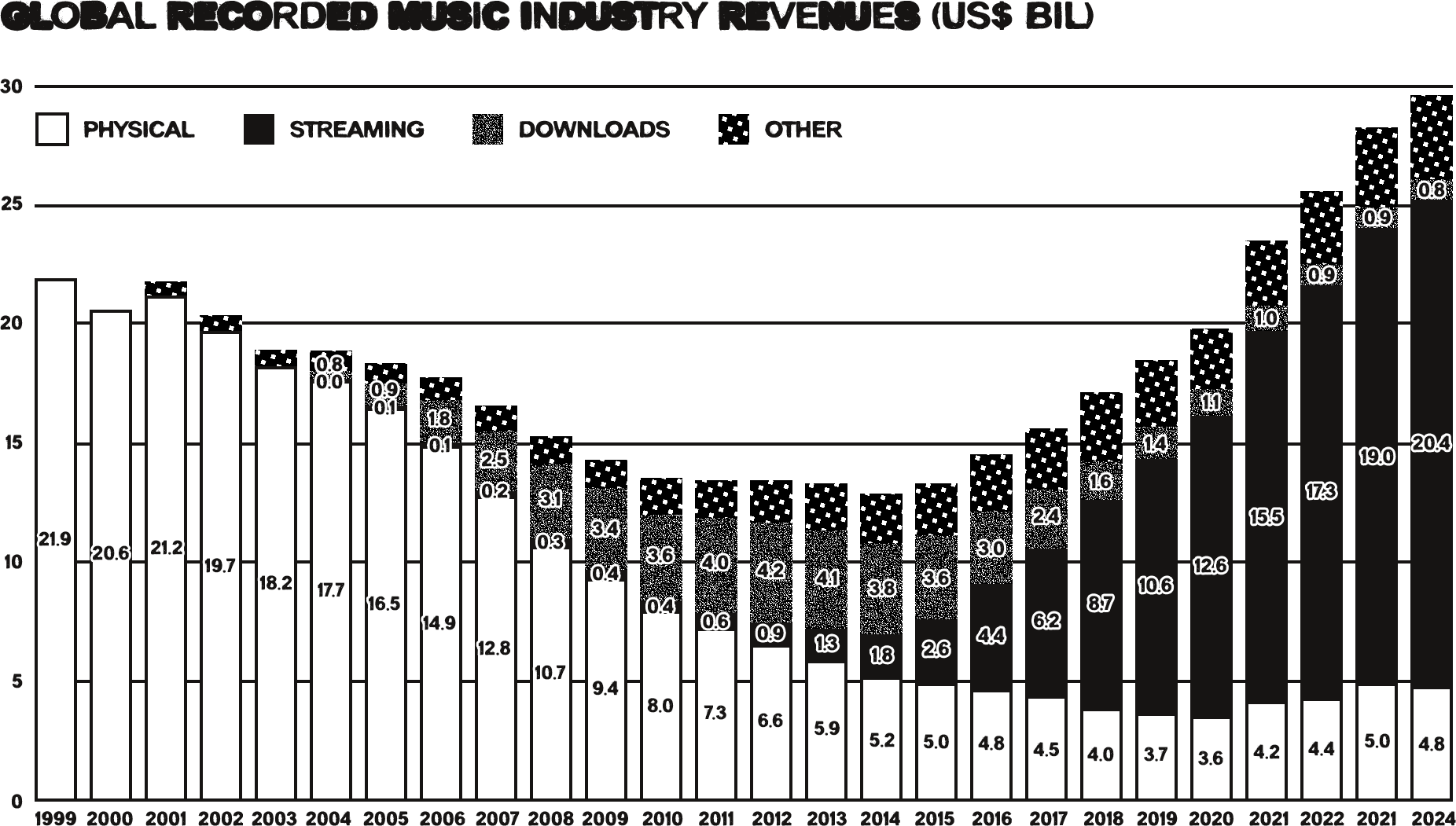
My interest here is primarily in helping to facilitate a more equitable industry for my friends who are artists, & that begins with a sober understanding of how the streaming economy works. And where the growth comes from. And how to shape the future such that we can provide a living wage to as large a working class of artists as possible.
Most people who share this vision spend most of their time wrongfully scapegoating Spotify, & I think don't believe that's the best way for us to direct our energy.
So how did we get into this mess?
Mainstream coverage of the music industry in the 21st century has been about as bad as it could possibly be. And I think this was driven by a few main things...
- The pro-rata economic model was brand new & was never well-explained to artists, journalists, or fans.
- Between the collapse of the traditional industry in the early aughts & the growth period starting in 2015, music distribution had become democratized. And there was not, still is not, & likely will never be enough money that consumers are willing to pay to provide a living wage to every artist who records a record. And the industry did a poor job of setting up artists' expectations for what a career in music might look like.
- The David vs Goliath story sells more than a properly fact checked article about how any of this actually works.
When Taylor Swift removed her music from Spotify in 2014, saying she didn't believe that music should be free to users, no one in the mainstream press (and I do mean not a single journalist) asked her, "But isn't your entire career built upon music fans hearing your music for free on the radio, & then buying your album? Aren't you & your peers living examples of the success of a so-called 'freemium' model? Isn't there some hypocrisy there?"
And, indeed, when British new wave artist Gary Numan (famous for the 1979 hit Cars) made headlines in 2021, claiming he was paid just $50 for a million streams, it was again reported uncritically. This claim was so outrageous that his label, Beggars Banquet, later made him clarify that he actually receives more than $2,500 per million streams on average.
And while it's disingenuous for Numan to have characterized all streaming payments to the press this way, there are reasons he might've misread this particular royalty statement. It could be that the track in question had a million total plays, but that the payment period only covered 20,000 plays. It could be that the royalty statement was for international plays that pay out at a lower rate. Or it could be that the plays were for a particular track for which he had been paid an advance sum that hadn't been recouped prior to the payment period. Who knows? If we're giving him the benefit of the doubt, there's a number of possible explanations. But the journalists either didn't know or weren't willing to probe, & instead ran with a narrative that gives the reader a false idea that streaming companies treat artists unfairly.
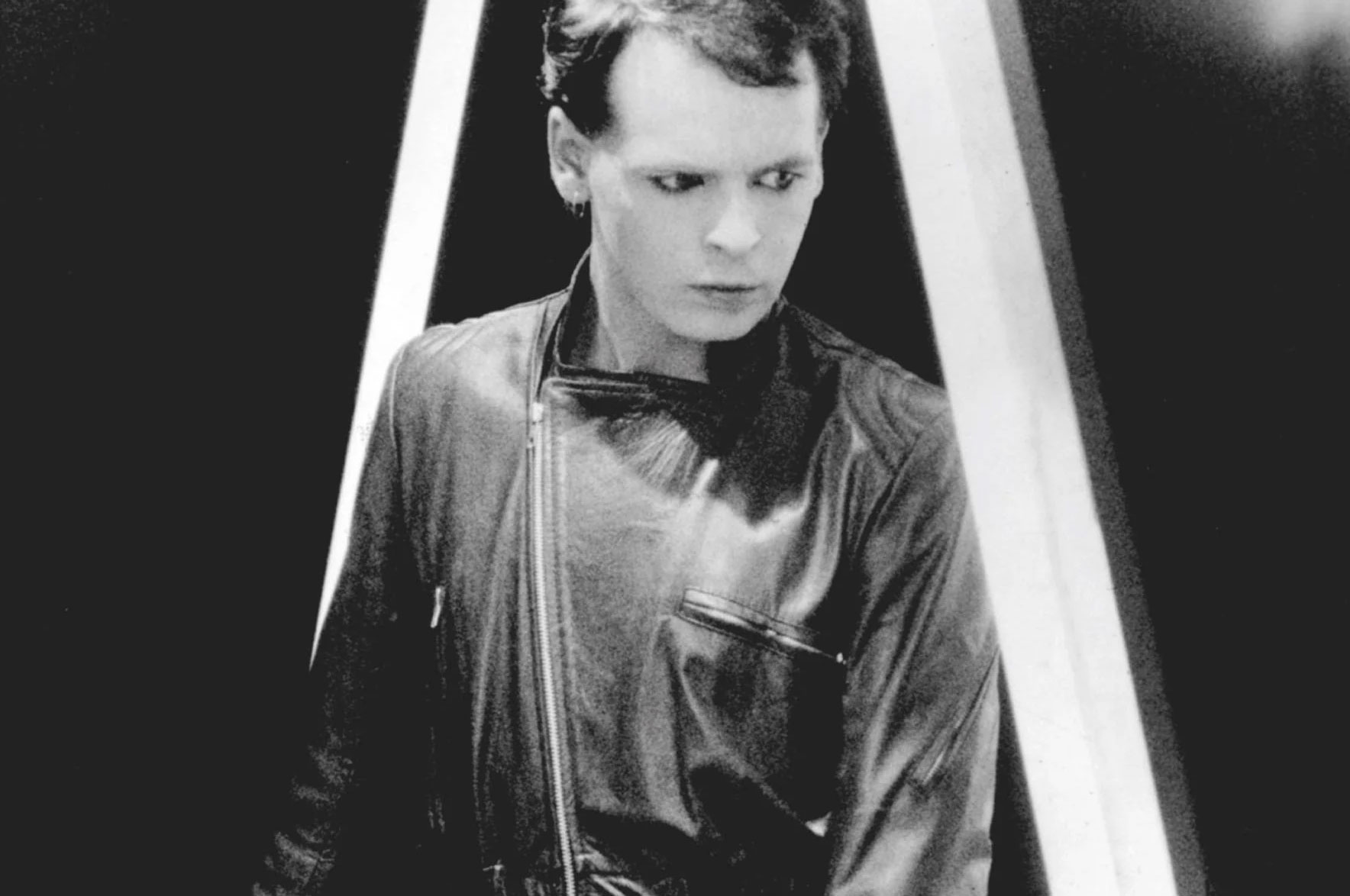
Of course, it can be debated whether $2,500 per million streams is fair. Maybe it is, maybe it isn't. But the media, influenced by artist complaints, seem to assume that it's unfair without supplying any reasoning. How do we substantiate the worth of a play, given that comparing album sales or digital downloads to streams is apples to oranges?
The straightforward response is that the value is simply the value, as calculated. X (the amount most people are willing to spend per month) times Y (the total number of subscribers) times 0.7 (the percentage allotted to paying artists) divided by N (the total number of streams made by all users). And for Spotify, that's $0.003-$0.005 per play. If people become willing to pay more, the monthly subscription fee increases. If they're become less willing to pay the current subscription cost, they cancel and the fee has to decrease.
There are, of course, other possible models. A user-centric model, for instance, suggests that instead of all revenue going into a pool & being divided across all plays, the royalty portion of an individual's monthly payment is divided across only the artists they themselves played. Under this model if I listen to Porno For Pyros exclusively for a month, Porno For Pyros receives 70% of my subscription fee. A progressive model (my preference) suggests that an artist's first play might be weighted to pay out more than their 100,000th play. But these alternative models simply redistribute payouts. The average payout ends up being no different than the standard pro-rata model. Which begs the question, is this payout objectively fair?
The closest comparison we can make may be British radio, since we can multiply 1 play times the audience size and approximate stream-equivalent numbers. BBC's Radio 2 broadcasts to around 826,000 listeners at any given moment (139 million weekly hours listened ÷ (7 days × 24 hours) ≈ ~826,000) & pays out around $122 for a 4 minute song. We can then extrapolate that 1m listeners might earn $147. If we assume that Numan's royalty rate is 44%, it seems Spotify is actually paying out 38x as much per listen as Radio 2.
Of course, this isn't an apples to apples comparison, either. And arguments can & have been made that "active plays" (which is to say self-directed plays) should pay out more than "passive plays" (which is to say recommended songs, which is more akin to radio listening). But should an active stream be worth significantly more than 38x what a radio play is worth? It's not obvious to me that it should. And it's less obvious that we should enforce an arbitrary, round number like $0.01 as a per-play minimum, which is often requested by groups like UMAW. Don't get me wrong, that would be great! But it would force streaming companies like Spotify to either raise the monthly cost of a subscription or cap the number of streams per month that a user is allowed. Either of those will only lead to subscription cancellations & revenue contraction for the industry.
I can't personally find any data that suggests to me that the current rates are unfair. The data suggests to me that the current rates are the market rates & that these are growing over time as Spotify converts more users from the free tier to premium. But just because the payouts aren't categorically unfair doesn't necessarily mean that artists are ultimately fairly renumerated.
Death by a thousand cuts
A great sign for the health of the industry is that share of plays by independent bands on Spotify is on the rise. Since 2017, share of streams for artists not on a major or Merlin labels grew from 13% to 29%. As far as I'm concerned, the more this grows, the better. Because the prerequisite of having to sign to a label in order to reach listeners generally makes earning a living much tougher for the average musician.
Consider that a million plays generates about $4,000 in royalties. This payment is split 28/72 between the publisher & label. The publisher may take 50% before passing the other half along to the songwriters. The label will commonly take as much as 80% before passing the rest along to the artist, who may then pay 15% to their manager & split the remaining money between the band members. If you're the drummer in a 5 piece band, you may end up with roughly $100 when all is said and done. So when a musician says, "I only got paid $100 for a million streams," there's truth to that. But what's not being said is that they're only getting 2.5% of the total payout. The lion's share here is going to the record label: $2,300.
This is why many of the wealthiest artists--especially in hip hop, like Dr. Dre, Jay Z, & Diddy--get there by starting a record label.
The labels are happy for this heat to be directed Spotify, rather than at them. And artists who complain tend to not want to criticize their label directly for fear that they'll lose standing & promotion. So the scapegoating of Spotify persists. But labels have a long and sordid history of abusing artists through contracts.
During the vinyl, cassette, & CD eras, the major labels were run a lot like venture capital firms, casting a wide net. A label would sign a number of bands expecting most of them to fail. But the deals would be so lopsided toward the label that one successful artist would make up for the failures, & then some. In the worst cases, an artist like TLC could sell millions of CDs & still end up forced to declare bankruptcy. But the upside was that a band whose debut record failed to find success could sometimes receive a six figure advance to try again.
These were the days of large contract advances, months long recording sessions, big budget music videos, & even financial support for touring. None of these things really exist anymore, & yet the royalty rates haven't improved all that much for artists that don't have negotiating leverage. The result is that many artists are locked into grossly unfair agreements with their labels, which make it nearly impossible to earn meaningful income from streaming. In previous eras, artists needed to sell a couple of million records before they could recoup. With so few resources being invested into artists now, it's much harder to justify this type of pre-condition, to the degree that it ever was justified to begin with.
In conclusion...
My goal with these essays is to illustrate that the problems with the streaming economy are much more complicated than simply scapegoating Spotify for supposedly underpaying artists, & that the solutions are also much more complicated than simply switching from one streaming service to another. What's needed is major reform across the industry. It's great that there is energy around creating a more equitable industry for artists, made clear by the many performative "I'm quitting Spotify" announcements across social media, but this energy needs to be directed in more useful directions.
Who the fuck is Jon W Cole?
.jpg)
To be honest, I probably shouldn't be the one writing these essays. It's just that no one else is. And it feels like someone probably should.
I'm not a journalist. I'm not an artist. I don't work in the music or streaming industries. I'm just a web developer. But I have a lot of friends who are artists. And so I know what the struggles are. And when I see the discourse online, none of it really seems to be pointing toward any real solutions that are going to make a better industry for my friends.
These essays are meant, first & foremost, to start constructive debates. And I would love to hear thoughts from folks who are more deeply plugged into the industry than I am. I certainly have blind spots. And I intend to update these essays over time based on feedback.
At me on Threads @jonwcole, or e-mail me at jon@jonwcole.com.
Cheers.